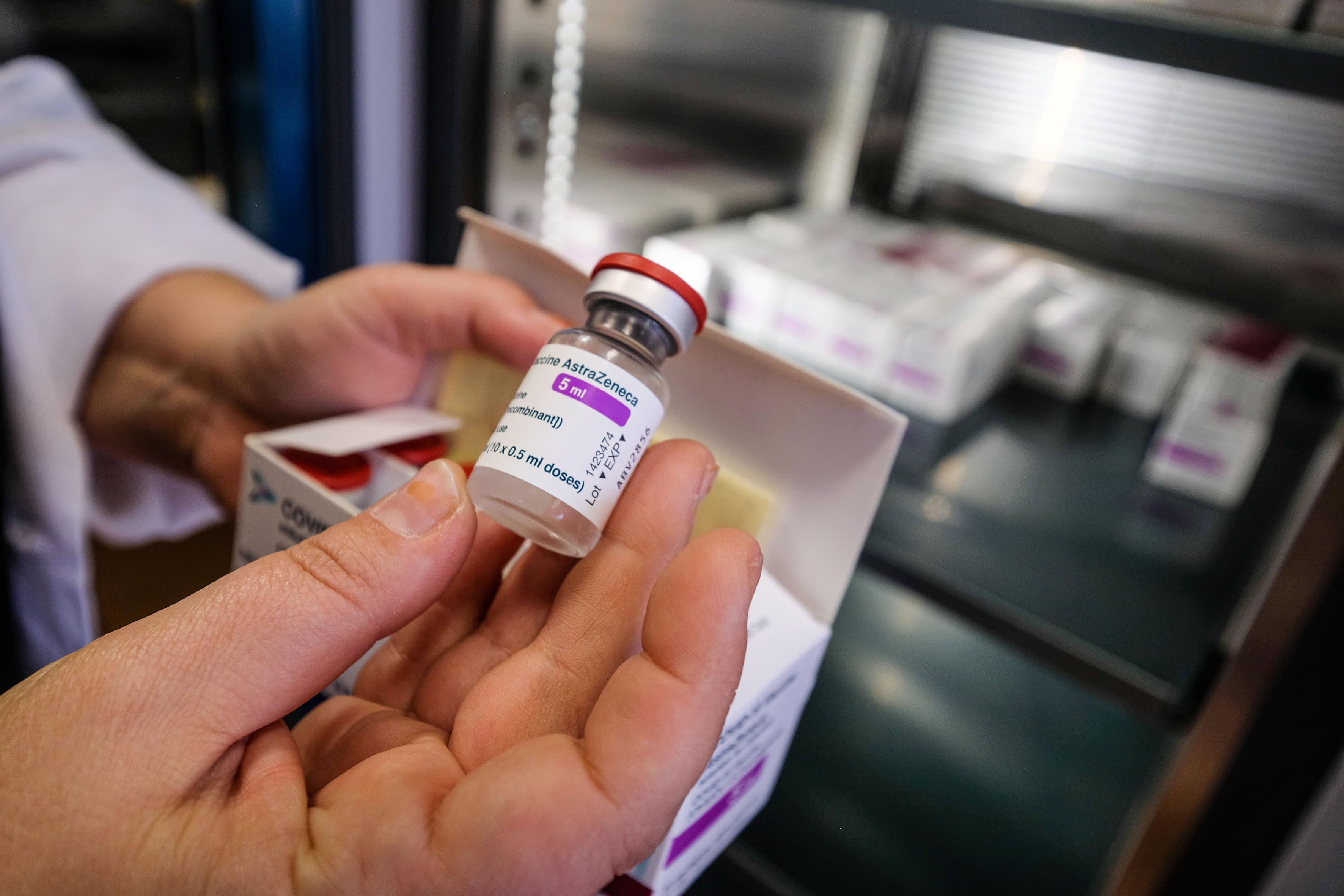Analysts cheer ‘surprisingly positive’ AstraZeneca U.S. trial data

A bottle of the AstraZeneca vaccine.
Igor Petyx | KONTROLAB | LightRocket via Getty Images
Data exceeded expectations
Jefferies healthcare analyst Peter Welford called the data “surprisingly positive” in a research note published Monday, writing that the interim analysis was better than expected.
Meanwhile Adam Barker, healthcare analyst at Shore Capital, highlighted that: “This is arguably the first trial for AZD1222 which has shown compelling efficacy in those 65 years and older”.
This is important because there were some questions about efficacy in this age group as previous studies were hampered by a smaller number of elderly participants. In this trial, 20% of the participants were 65 years or older and 60% had co-morbidities which put them at increased risk of developing severe disease.
Critically, Monday’s trial data confirmed the safety profile of the vaccine. Barker highlighted that given this data is from a single trial which uses a single dosing regimen, it removes the complications of data interpretation that has been seen in the past with the AstraZeneca-Oxford jab.
Barker added that the lack of evidence for blood clots in the study was also reassuring given recent concerns. “However, we are not surprised by this data given the evidence for a link between the vaccine and blood clots was already fairly weak.”
AstraZeneca said it will continue to analyze the data and prepare for the primary analysis to be submitted to the U.S. Food and Drug Administration for emergency use authorization in the coming weeks. The vaccine has already been granted a conditional marketing authorization or emergency use in more than 70 countries across six continents.
Dosing regimen a key question for the FDA
“I can’t see why the regulator wouldn’t approve it,” Barker wrote, but cautioned that the detailed data was still outstanding.
One key question for the FDA will be what dosing regimen they will endorse should they ultimately approve the vaccine.
“This trial is based on dosing 4 weeks apart, but we know efficacy may be greater if you dose with a longer interval (up to 12 weeks) and countries like the U.K. have successfully used this ‘longer duration between doses’ strategy to vaccinate more people quickly,” he flagged.
So the question for the FDA is whether they recommend giving the two doses four weeks apart — given that’s what was tested in the U.S. trial — or include data from the U.K. and elsewhere which suggests a longer duration is appropriate.
Welford also noted the sub-optimal dosing regimen used in this trial. “The trial evaluated the 4-week dosing schedule, but we have evidence to suggest the vaccine works better with a longer dosing interval,” he said.
“Primary analysis of the Phase III clinical trials from the U.K., Brazil and South Africa showed 62% efficacy when given the vaccine was given at an interval of 4 to 12 weeks but efficacy increased to 82% when the interval was stretched to 12 weeks.”
Beyond dosing, analysts are also watching for additional detail on how the vaccine protects against different variants. This is expected to be included in the package of data submitted to the FDA.
When it comes to comparing today’s efficacy data to that from some of the other vaccine-makers, Welford cautioned that since the initial vaccine readouts from Pfizer and Moderna, Covid-19 variants have become increasingly common so the efficacy data is not directly comparable across the different vaccines.
Barker added that the trial results gave the vaccine important validation. “Given its cost and ease of storage and distribution, AZD1222 was once described as a ‘vaccine for the world’. This is a fair label in our opinion,” he wrote. “Data like this reported today that more conclusively demonstrates the efficacy and safety of AZD1222 is certainly something to celebrate.”
AstraZeneca has pledged to distribute the vaccine at no profit for the duration of the pandemic. The company’s shares traded 2% higher in London on Monday.




